
ANNALS OF HEMATOLOGY
Scope & Guideline
Connecting researchers and clinicians for a healthier tomorrow.
Introduction
Aims and Scopes
- Clinical Management of Hematological Disorders:
The journal frequently publishes studies focused on the clinical management of various hematological conditions, including leukemia, lymphoma, myeloma, and bleeding disorders. This includes clinical trials, treatment strategies, and guidelines for managing complex cases. - Molecular and Genetic Insights:
Research articles often delve into the molecular and genetic underpinnings of hematological diseases, exploring mutations, epigenetic changes, and their implications for diagnosis and treatment. - Innovative Therapies and Treatment Regimens:
The journal showcases developments in novel therapies, including targeted therapies, immunotherapies, and combination treatments, as well as real-world efficacy studies that inform clinical practice. - Transplantation and Cellular Therapies:
There is a significant focus on the role of hematopoietic stem cell transplantation, including conditioning regimens, donor selection, and post-transplant complications, highlighting advancements in transplantation techniques. - Biomarkers and Prognostic Indicators:
The identification and validation of biomarkers for disease prognosis, treatment response, and minimal residual disease monitoring are core areas of interest, reflecting the journal's commitment to precision medicine.
Trending and Emerging
- Immunotherapy and CAR-T Cell Therapies:
Recent publications highlight a significant increase in research focused on immunotherapies, particularly CAR-T cell therapies, reflecting their growing role in treating hematological malignancies. - Real-World Evidence Studies:
There is a surge in studies that analyze real-world treatment outcomes, providing insights into the effectiveness and safety of therapies in diverse patient populations outside of clinical trials. - Management of COVID-19 in Hematology Patients:
The impact of COVID-19 on hematology patients has led to an increase in research exploring treatment modifications, infection management, and vaccine responses in this vulnerable population. - Genetic and Genomic Profiling:
Emerging themes in genetic and genomic profiling are prevalent, with a focus on how these technologies can inform prognosis and treatment strategies for various hematological disorders. - Patient-Centric Approaches and Quality of Life Assessments:
There is a growing emphasis on research that addresses patient-reported outcomes and quality of life, recognizing the importance of holistic care in managing hematological diseases.
Declining or Waning
- Traditional Chemotherapy Approaches:
There is a noticeable decrease in studies focusing solely on traditional chemotherapy regimens, as the emphasis shifts towards targeted therapies and immunotherapies. This trend indicates a growing preference for personalized treatment strategies. - Epidemiological Studies:
The frequency of purely epidemiological studies has declined, possibly due to a shift towards more translational and clinical research that directly impacts treatment and management outcomes. - Single-Center Retrospective Studies:
While still valuable, the number of single-center retrospective studies has waned as there is a movement towards larger, multicenter trials that provide more robust data and generalizability of findings. - Basic Science Research:
There has been a reduction in the publication of basic science studies that do not directly relate to clinical applications, as the journal increasingly prioritizes research with immediate clinical relevance.
Similar Journals
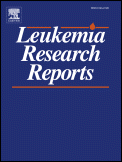
Leukemia Research Reports
Connecting researchers to combat leukemia.Leukemia Research Reports, published by Elsevier Advanced Technology, is a prominent open-access journal dedicated to the latest advancements in the field of hematology and oncology. Since its launch in 2012, this journal has been a vital resource for researchers, healthcare professionals, and students aiming to disseminate and access high-quality research articles focused on various aspects of leukemia and related blood disorders. With an impact factor indicative of its significance in the field, Leukemia Research Reports currently holds a Q3 quartile ranking in both Hematology and Oncology, and is included in key databases such as Scopus. The journal not only embraces a commitment to open access, ensuring that research is freely available, but also actively promotes collaborations that strive to enhance our understanding and treatment of leukemia. Based in the United Kingdom, this journal continues to play a crucial role in fostering innovation and knowledge sharing within the medical community.
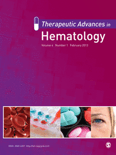
Therapeutic Advances in Hematology
Advancing hematology through innovative research.Therapeutic Advances in Hematology is a prestigious, peer-reviewed journal dedicated to advancing the field of hematology through innovative research and clinical studies. Published by SAGE Publications Ltd, this journal has become a vital resource for hematology professionals and researchers since its inception in 2010. With its impactful Q1 ranking in Hematology and a Scopus rank of 62 out of 137, it firmly establishes itself as a leader in disseminating significant findings and therapeutic approaches. The journal has been committed to open access since 2019, ensuring that its cutting-edge research is readily available to the global scientific community. Covering a broad scope of topics within hematology, Therapeutic Advances in Hematology is an essential platform for those seeking to enhance their understanding and implementation of therapeutic practices in hematological conditions. The journal embraces submissions from both clinical and laboratory perspectives, fostering collaboration and dialogue among researchers, clinicians, and students alike.

HemaSphere
Empowering innovation in blood science research.HemaSphere, published by WILEY, stands at the forefront of hematology research, offering a vital platform for the dissemination of cutting-edge findings in the field. Since its inception in 2017 and official transition to Open Access in 2018, the journal has positioned itself as a leading conduit for high-impact research, maintaining a prestigious Q1 quartile ranking in the Hematology category as of 2023. Addressed in the United States at 111 River St, Hoboken, NJ, HemaSphere aims to foster a global dialogue among researchers, clinicians, and students by providing unrestricted access to high-quality content that encompasses clinical and experimental advancements. With an array of engaging articles, reviews, and commentaries, HemaSphere contributes significantly to the advancement of hematology, ensuring that critical knowledge is readily accessible to enhance patient care and innovative research. To explore the latest developments and breakthroughs in this dynamic field, we invite scholars, professionals, and students to engage with HemaSphere and elevate their understanding of hematologic science.

UHOD-Uluslararasi Hematoloji-Onkoloji Dergisi
Connecting scholars in the fight against cancer and blood disorders.UHOD-Uluslararasi Hematoloji-Onkoloji Dergisi, published by AKAD DOKTORLAR YAYINEVI, is a pivotal journal in the fields of hematology and oncology, catering to an international audience of researchers, clinicians, and students. Since its inception in 2005, the journal has committed to disseminating high-quality, peer-reviewed research, highlighting advancements and challenges in the diagnosis and treatment of hematological and oncological disorders. Registered under ISSN 1306-133X, it serves as a significant platform for scholarly discourse, despite its recent categorization in the Q4 quartile for both hematology and oncology—indicating opportunities for growth and contribution within the scientific community. While currently not Open Access, the journal's indexed contribution to Scopus ranks it within the 12th and 17th percentiles in the domains of hematology and oncology respectively, reflecting its emerging presence within the academic landscape. As it approaches its convergence point in 2024, UHOD strives to elevate its influence, providing invaluable insights and fostering collaborations in the ongoing fight against blood disorders and cancer.

BLOOD REVIEWS
Advancing the frontiers of Hematology and Oncology.BLOOD REVIEWS is a highly regarded journal published by Churchill Livingstone, specializing in the fields of Hematology and Oncology. With an impressive Q1 ranking in both disciplines and placing in the top 10% of its peer categories according to Scopus metrics, it provides an essential platform for the dissemination of cutting-edge research and reviews pertaining to blood disorders and cancer treatment. Since its inception in 1987 and continuing through 2024, the journal has established itself as a cornerstone for healthcare professionals, researchers, and students who seek to advance their understanding of hematologic and oncologic topics. While not an open-access journal, BLOOD REVIEWS retains a reputation for delivering high-quality, peer-reviewed articles that foster dialogue and innovation within the scientific community. For those in the United States and beyond, the journal serves as a vital resource, housed at the Journal Production Department in Edinburgh, Scotland, ensuring accessibility and a global reach in its critical academic contributions.
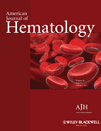
AMERICAN JOURNAL OF HEMATOLOGY
Transforming Research into Clinical BreakthroughsAmerican Journal of Hematology, published by Wiley, stands as a premier outlet for the dissemination of cutting-edge research in the field of hematology. With a commendable impact factor and ranked #9 out of 137 in the Scopus medicine category, this journal has established a robust presence since its inception in 1976. Operating in the Q1 quartile for hematology, it serves as a crucial resource for researchers, clinicians, and students dedicated to understanding blood disorders and advancing treatment methodologies. While the journal does not currently offer open access options, it remains highly regarded for its rigorous peer-review process and impactful contributions to the scientific community. With coverage extending into 2024, the American Journal of Hematology is committed to fostering innovation and collaboration within the hematological sciences.

Journal of Blood Medicine
Connecting Minds: Bridging Research and Clinical Practice in HematologyThe Journal of Blood Medicine, published by DOVE MEDICAL PRESS LTD, stands as a vital resource in the field of hematology, focusing on the latest research developments and clinical advancements in blood medicine. With an impact factor reflective of its growing relevance, this open-access journal has been delivering quality scholarly work since 2010, ensuring that critical research is readily available to the global scientific community. The journal operates under an open-access model, further enhancing its dissemination and accessibility to researchers, professionals, and students alike. In the 2023 rankings, it secured a Q3 category status within hematology and achieved a commendable 76th rank out of 137 in Scopus listings, indicating its commitment to quality and innovation in this specialized area. Located in New Zealand, the journal's diverse topics encompass clinical research, treatment modalities, and emerging therapies, contributing significant insights vital for shaping future advancements in blood medicine.
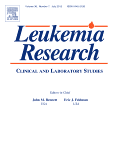
LEUKEMIA RESEARCH
Pioneering research for innovative leukemia treatments.Leukemia Research is a prominent academic journal dedicated to advancing the field of hematology and oncology, focusing on the latest research developments related to leukemia and other hematological disorders. Founded in 1977 and published by Pergamon-Elsevier Science Ltd in the United Kingdom, this esteemed journal has established itself as a vital resource for researchers and clinicians alike. With an impressive impact factor and categorized in the top quartiles of Cancer Research and Hematology, it provides a platform for high-quality research articles, reviews, and clinical studies that contribute to a deeper understanding of leukemia's complexities. Although not an Open Access journal, Leukemia Research ensures widespread dissemination of knowledge crucial for developing innovative treatment strategies and improving patient outcomes. Researchers, professionals, and students in the fields of hematology and oncology will find this journal an invaluable asset in staying at the forefront of leukemia research, as it prepares to expand its impact through converged years of publication extending into 2024.
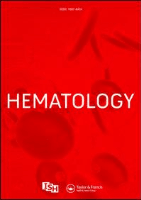
Hematology
Advancing Hematology: Where Innovation Meets InsightHematology is a distinguished open-access journal published by Taylor & Francis Ltd, dedicated to advancing research and knowledge in the field of hematology. Established in 1996, the journal has continually evolved to meet the needs of a growing community of researchers and practitioners, providing a vital platform for disseminating innovative findings and clinical insights. With its impact factor reflecting a robust commitment to quality scholarship, Hematology has achieved a respectable position in its category as evidenced by its Q3 ranking in the Hematology category and ranks #85 out of 137 in the Scopus index, which positions it in the 38th percentile among its peers. The journal’s open-access policy, initiated in 2019, further enhances its reach and accessibility, allowing a broad audience of professionals, researchers, and students to engage with high-quality research without barriers. By covering a wide range of topics related to blood disorders, treatment methodologies, and emerging therapies, Hematology stands as an essential resource for those dedicated to innovation in this critical area of healthcare.

Experimental Hematology & Oncology
Unveiling Innovations in Cancer and Hematological ScienceExperimental Hematology & Oncology is a premier journal published by BMC, dedicated to advancing knowledge in the fields of hematology, oncology, and cancer research. Since its inception in 2012, this Open Access journal has emerged as a vital resource for researchers and healthcare professionals, fostering the dissemination of high-quality research that enhances our understanding of blood disorders and malignancies. With impressive rankings in Quarters 1 of key categories including Cancer Research, Hematology, and Oncology, it holds significant prestige, evidenced by its Scopus rankings: #42/404 in Medicine (Oncology) and #17/137 in Medicine (Hematology). The journal aims to publish cutting-edge studies, reviews, and perspectives that contribute to the evolution of therapeutic strategies and innovative treatment modalities. Researchers and practitioners alike will find this journal indispensable for staying at the forefront of breakthroughs in hematological and oncological research.